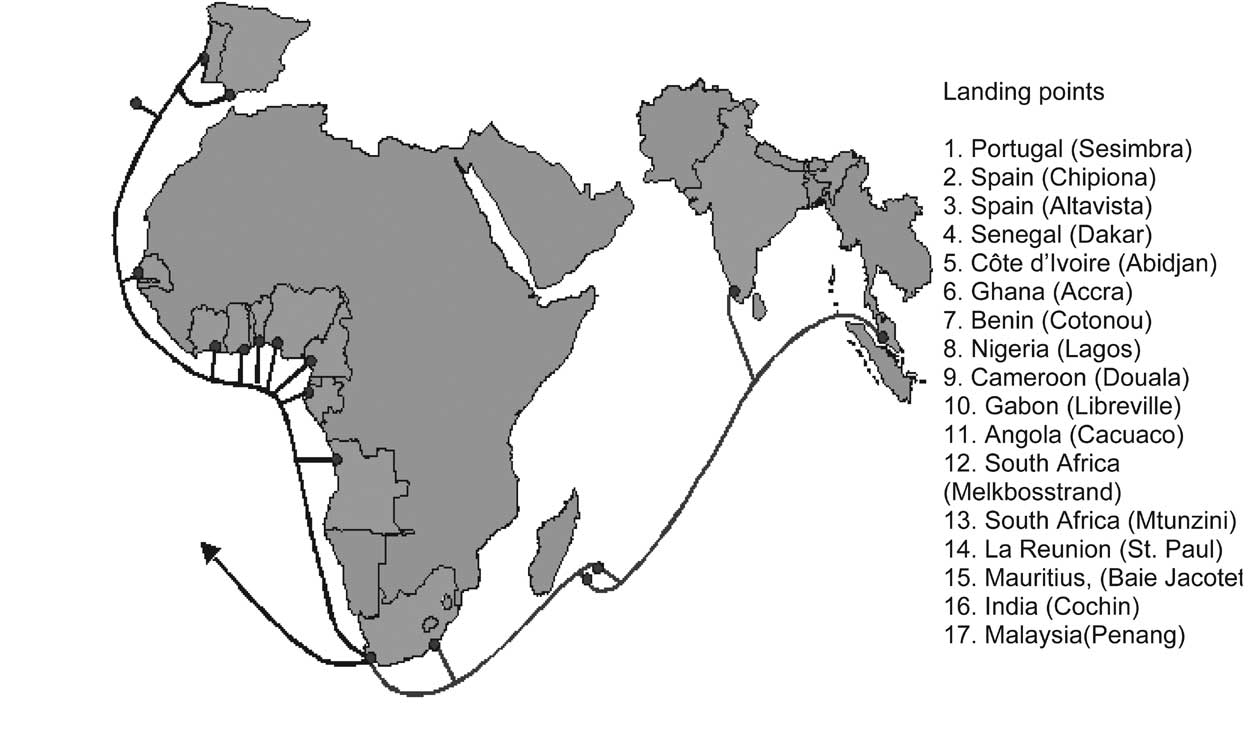
Figure 3-2. SAT3 fiber cable routing with landing points. Source: Fibre for Africa, 2007c.
3.4 Natural Resource Management and the
Environment
Technologies that address a single component of agriculture such as biophysical constraints but neglect, for example,the socioeconomic context have not been widelyadopted (Omamo and Lynam, 2003; IAC, 2004). Issues such as property rights and collective action are important in determining who benefits from increases in productivity
(Meinzen-Dick et al., 2002). Resource scarcity and unequal distribution of access to these resources can lead to violentconflict, as has been witnessed in both Zimbabwe and Coted’Ivoire. AKST is increasingly influenced by interactions betweenbiophysical and socioeconomic processes (Norse andTschirley, 2000).
Many SSA countries have formulated policies, enactedlaws and established agencies to conserve biological diversity,often under the guidance of local chapters of the WorldConservation Union (IUCN—formerly International Unionfor the Conservation of Nature). These policy regimes addressdifferent components and issues of biological diversityand its management. While some focus on ecosystem managementas a whole, others are devoted to regulating and
conserving specific components.
3.4.1 Land and water management
A number of strategies have been put forward to integratethe many aspects of agriculture in order to address sustainablelivelihoods (Scoones, 1998). Among them are sustainableagriculture, integrated water and watershed management(FAO, 1997; Lal, 1999), agroforestry (Franzel et al.,
2001; Beer et al., 2005), integrated soil fertility and nutrient management (Bationo et al., 1998; Vanlauwe and Giller, 2006) and local knowledge. Newer approaches such as ecoagriculture (McNeely and Scherr, 2003) build on the objective of conserving biodiversity while increasing productivity and livelihood security.
Integrated natural resource management is seen as a useful approach or framework for integrating the multiple aspects of agriculture to achieve sustainability and development goals (Izac and Sanchez, 1998; Palm et al., 2005). It combines technological, social, economic and institutional innovations and methods with the goal to improve support services for research and development, as well as development strategies and policies (Figure 3-3). It aims to build on local knowledge by conducting participatory research to augment people’s capacity to manage their local natural resources, enhancing social, physical, human, natural and financial gains (Harwood and Kassam, 2003; Thomas, 2003) Building agroecosystem resilience through nutrient cycling, carbon sequestration, water management and conservation of biodiversity is a crucial part of an integrated framework.
Assessments of the effectiveness of integrated natural resource management are mixed. One constraint is the lack of well-described pathways that can trace the effect of research outputs on development (Gottret and White, 2001). Hierarchical approaches contend with important questions such as who wins and who loses. Research in eastern Africa on integrated watershed management has shown that“participation” in diagnosing problems and implementing programs must move beyond community-level forums to so-